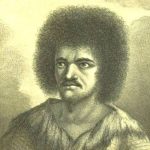
Many Jamaicans have made their mark in Toronto, however, the community is not without its challenges. The close proximity between Jamaica and Toronto has its positive and negative aspects. When tension heats up between rival gangs in Kingston, the fallout can be felt on the streets of Toronto. For example, during October and November, 2002, there were waves of gang related incidents in Toronto with incidents almost every weekend. For example, Toronto newspapers reported Heavy D, a member of the Markham Crew gang , turned up dead in a Scarborough convenience store as a result of a shooting that took place in broad daylight. When Jamaican born youth, who have been raised in Toronto run afoul of the law, some are deported back to Jamaica. Ill equipped by the Canadian school system and lacking the skills to earn a living, some have no means of supporting themselves upon their return to Jamaica. For some, it is a country where they have not resided since they were infants or toddlers. The impact of their difficulty in adjusting to the Jamaican society is sometimes felt on the streets of Kingston. The Jamaican government has produced reports about the deportee problem. (Deportee Study: Executive Summary)
The criminal element is a small part of the community. Are other Jamaicans facing challenges in an attempt to adjusting to their adopted home in Toronto? Goldfarb, a reputable polling organization, did an in depth study into the impact of race on quality of life in the greater Toronto area. Eighty-eight per cent of Jamaicans surveyed indicated that racial and ethnic discrimination was a problem. Almost two-thirds of Jamaicans surveyed indicated that they had personally experienced it. A study conducted by Michael Ornstein, director of the Institute for Social Research at Toronto’s York University professor, concluded that:
- Toronto is quickly becoming segregated along racial, ethnic and economic lines.
- Huge “inequalities” in income, employment, education and rates of poverty based on ethnicity and race.
Based on studies that he conducted, David Hulchanski, a professor of housing policy at the University of Toronto, concluded that blacks and other racial minorities still face discrimination in the housing market. Based on in depth interviews with Toronto immigrants of Jamaican, Polish and Somali origin, Professor Hulchanski and York University Geography Professor Robert Murdie, plotted the three ethnic minorities on a scale measuring discrimination from one to five. Based on the experiences they related, Polish immigrants tended to receive a rating of one. Jamaicans averaged just over three.
Based on an analysis of 1996 census data, unemployment rates were found to vary from less than 6 per cent among Europeans to more than 40 per cent in some black groups. The discrepancy in child poverty rates ranged from less than 10 per cent among families of European origin to more than 60 per cent in some Black ethnic groups. Jamaicans were included in a group experiencing significant disadvantage with a poverty rate of around 50%.
Based on 2001 census data, many well-educated immigrants who arrived in Canada during the 1990’s are working in jobs for which they are overqualified. The top 29 occupations of recent male immigrants holding university degrees included restaurant and food service managers, taxi and limousine drivers, truck drivers, security guards and janitors.
“Whether they worked in a high-skilled or a low-skilled occupation, recent immigrants earned less than their Canadian-born counterparts”, Statistics Canada reported in March 2003. In spite of the fact that immigrants arriving in Canada during the 1990’s were better educated than in previous decades, their earnings compared with Canadian-born workers have “deteriorated sharply”.
In an attempt to address some of these issues, the Toronto City Council approved the Toronto Plan of Action for the Elimination of Racism and Discrimination during its April, 2003 session.





